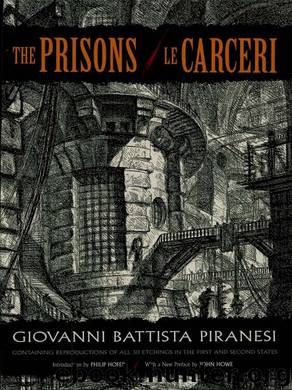The Prisons Le Carceri by Howe John Piranesi Giovanni Battista Hofer Philip

Author:Howe, John, Piranesi, Giovanni Battista, Hofer, Philip
Language: eng
Format: epub
ISBN: 9780486134000
Publisher: Dover Publications
Published: 2012-10-22T16:00:00+00:00
Fig. 1. Preliminary drawing for Plate VIII (Courtesy Kunsthalle, Hamburg).
Fig. 2. Preliminary drawing for Plate XI (Courtesy The Trustees of the British Museum).
Fig. 3. Preliminary drawing for Plate XIV (Courtesy The Trustees of the British Museum).
The first issue of Piranesi’s Prisons etchings (ca. 1745) consisted of only fourteen1 subjects very lightly bitten by the acid, which are larger, more atmospheric and freer than the print by Marot and most of the prints and drawings for stage designs by the members of the Bibiena family of artists. But, apparently, the Italian art-buying public was not impressed—or else the publisher, Jean Bouchard, failed to promote them properly. (We have already noted that even their title, probably suggested by him, was badly spelled by the artist on the title page.) A. M. Hind’s 1922 catalogue guessed that fewer than a dozen complete sets of this first printing still existed. And of these, he said, only a still smaller number had the first version of the title with Bouchard’s name spelled “Buzard.” Now we know today that Hind underestimated the number of sets still extant, some of which were hidden away unrecognized and unlisted in town libraries, country homes and public institutions. More sets have appeared in subsequent years, but still no very great number. Therefore, one can still say that “first states” of the Prisons are quite rare, and that they will never be frequently encountered.
Nearly all art critics agree that the influence of the great Venetian artist Giovanni Battista Tiepolo can be seen in the style of Piranesi’s early prints, and it is generally presumed that the young artist must have seen Tiepolo’s famous paintings in his Venetian boyhood. Yet it is amazing how individual Piranesi’s touch is, nonetheless. His etching is as he intended it to be, almost freehand drawing seemingly made in a passionate hurry. Arthur Hind admires the first edition profoundly, as do many of today’s artists and critics, because of a linear brilliance and an abstract quality in keeping with current taste, which also has sometimes been accused of being “the cult of the unfinished”! In any event, the high quality of each of the fourteen first subjects in their “unfinished” (?) state is incontestable. Piranesi’s etched lines dance and soar, stimulating the beholder’s imagination at the same time that they fill him with wonder, a deep sadness and a sense of mystery. Where do those immense vaults actually end? To what further fastnesses do the innumerable staircases and balconies lead? What tortures are suggested by the projecting beams, wheels, ropes, chains and less clearly defined means of punishment? Who are those wretched beings one occasionally glimpses chained and fastened to the great rings in the walls? By whose authority were they put there, and for what cause? For all Piranesi’s barely outined and emaciated, ragged figure subjects defy analysis, although many of them can be seen to gesticulate or writhe in an agony of suffering. They usually serve to accentuate the scale of the prisons themselves, but they vary greatly in size, and can sometimes be accused of being out of all reasonable proportion.
Download
This site does not store any files on its server. We only index and link to content provided by other sites. Please contact the content providers to delete copyright contents if any and email us, we'll remove relevant links or contents immediately.
Wonder by R.J. Palacio(7732)
Unlabel: Selling You Without Selling Out by Marc Ecko(2981)
POP by Steven Heller(2883)
Hidden Persuasion: 33 psychological influence techniques in advertising by Marc Andrews & Matthijs van Leeuwen & Rick van Baaren(2778)
The Pixar Touch by David A. Price(2739)
Ogilvy on Advertising by David Ogilvy(2682)
Drawing Cutting Edge Anatomy by Christopher Hart(2677)
Slugfest by Reed Tucker(2415)
The Art of War Visualized by Jessica Hagy(2412)
The Curated Closet by Anuschka Rees(2385)
Stacked Decks by The Rotenberg Collection(2270)
The Wardrobe Wakeup by Lois Joy Johnson(2235)
365 Days of Wonder by R.J. Palacio(2233)
The Code Book by Simon Singh(2210)
Rapid Viz: A New Method for the Rapid Visualization of Ideas by Kurt Hanks & Larry Belliston(2195)
Tell Me More by Kelly Corrigan(2195)
Keep Going by Austin Kleon(2161)
Tattoo Art by Doralba Picerno(2083)
Tokyo Geek's Guide: Manga, Anime, Gaming, Cosplay, Toys, Idols & More - The Ultimate Guide to Japan's Otaku Culture by Simone Gianni(1945)
